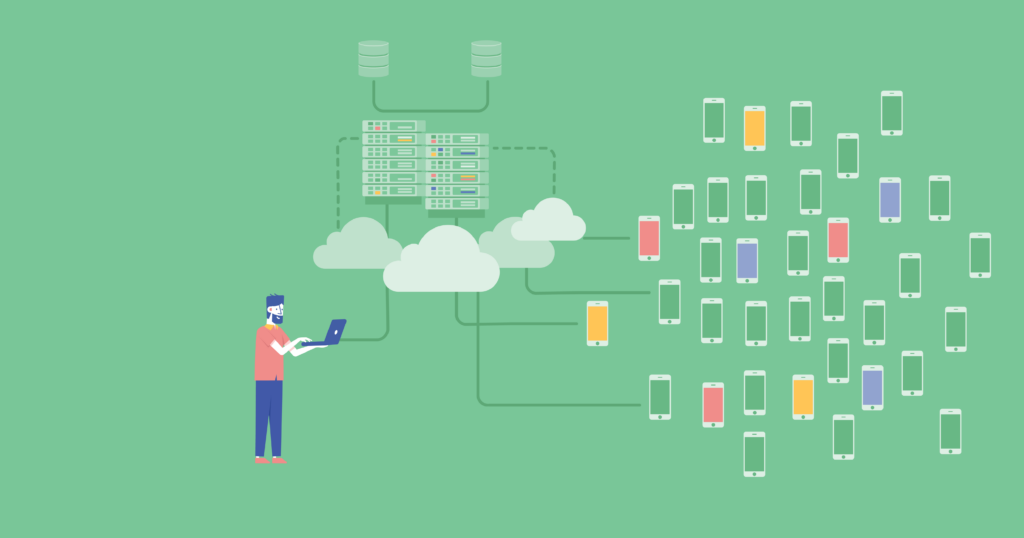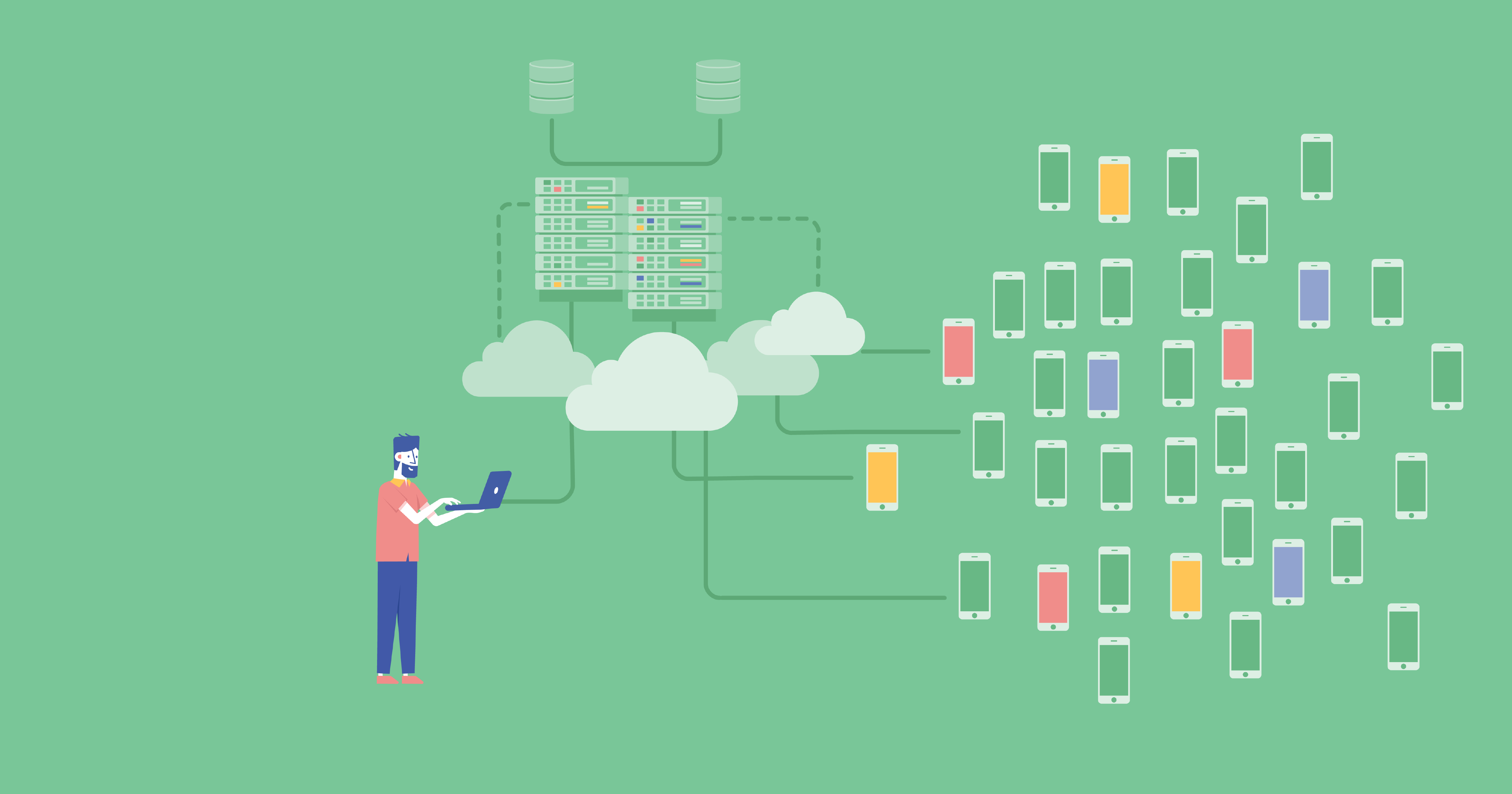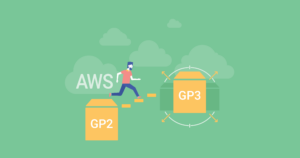How To Build a Scalable Mobile App Infrastructure
As a developer, you’re probably well aware of how much time, effort and money goes into building an application. So the last thing you want to experience is seeing all your hard work disappear into thin air, especially because of something that’s completely within your control, such as scalability. With this in mind, for today’s article, we are looking at how to build a scalable mobile app infrastructure.
We live in a fast-paced world where even a second of delay could make the difference between two products. For startups, this is especially important. After all, scalability is often the very first thing investors look at when deciding to back a product. So there’s no room to not take it seriously!
But What Does ‘Scalable’ Mean?
From an investor’s point of view, a scalable app is an app that can easily accommodate double, triple, or even ten times its current amount of users.
From a technical standpoint, this typically translates into:

No crashes
Few things are more annoying than utilising an application and then having to watch it die on you — you have to start everything from scratch. This leads to a lot of friction, which will cause your users to drop your app for something better.
One way to avoid this is to prepare your infrastructure in advance — have some servers on standby that can share the load when your app traffic increases.
No downtime
There are many factors that can determine downtime (including failures, errors and outages), but the most common reason of all is a sudden increase in traffic. As your app becomes more popular — or cross your fingers, goes viral — the number of users exponentially grows, which often results in crashes and downtime.
This is why, when building a mobile application, it is vital to think about scalability from the very first lines of code. Otherwise, it will become increasingly difficult to modify your application’s architecture.
Fast loading speeds
Delay can also make or break a mobile application. For this reason, you need to prioritise building your app on top of high-performance servers. These should be correctly configured and ensure that your app is running within optimal parameters.
Top-notch security
Though this may not be something immediately apparent to end users, it is a critical aspect to consider, especially with the number of cyberattacks continuously increasing.
Bear in mind that it’s important to keep your users’ data safe from breaches, but this must be balanced with your app’s performance — complex security solutions can not only slow down applications but may even lead to crashes.
So How Do You Build a Scalable Mobile App Infrastructure?
All too often, development teams get so excited about new ideas that they end up going straight to coding and completely ignoring scalability. As a result — inevitably — the current infrastructure can no longer withstand the heavy loads, and by that point, it’s already too late. The effort and budget needed to improve the app are significantly greater than if they’d built it aiming for scalability.
This is why we always recommend thinking about scalability before writing code. Here’s everything you need to consider to build a scalable infrastructure for your mobile application:
Tech stack
Choosing the right tech stack is the first and most important step in building a scalable mobile app. Instead of following the trends or just picking something on a whim, you should give this step a lot of thought and choose the technologies that work best for your application.
Remember that once your app is live and already in use, it becomes considerably difficult (or even impossible) to change your tech stack.
Programming language
This one goes hand-in-hand with choosing the right tech stack. We can’t tell you that X programming language is better than Y because technologies evolve every day — some appear whilst others go obsolete. It’s up to you to choose the best programming language for your application’s needs.
That being said, when making this decision, there are two things you should always keep in mind:
- ease of use – you should try to choose programming languages that are easy to write code in
- the community around the programming language — more often than not, the bigger the community, the less likely for that language to go obsolete in the near future. So try to avoid new programming languages, as they won’t have as many adopters.
Database
Your choice of database will also have a significant impact on your app’s scalability. Choosing one solution over another will ultimately come down to what you wish to achieve.
Even so, no matter which database you eventually decide on, you should probably:
- divide your data between multiple databases to avoid the risk of losing it in case of failure
- occasionally archive some old information to avert storage-related performance issues.
Infrastructure scaling
There are two ways to scale a mobile app’s infrastructure:
- Vertical scaling (or scaling up) refers to maximising the resources of each infrastructure component to expand its ability to handle increasing loads. From a hardware point of view, this means adding more processing power (CPUs) and memory to your servers; from a software perspective, this means algorithm and code optimisations (so they utilise fewer resources). This type of scaling is easy to implement but can also become expensive.
- Horizontal scaling (or scaling out) refers to adding more components (usually servers) to your infrastructure. Then, by making use of load balancing, you can evenly spread the requests for resources across all machines and thus avoid overloading a single machine. This type of scaling is harder to implement, but it’s equally more affordable.
As both methods come with pros and cons, development teams will generally prefer to mix them, a process known as diagonal scaling.
Another thing you should probably consider is dividing your project into several key modules — this will make your app more flexible as well as suitable for future scaling.
Caching
You should try to use caching whenever possible to reduce the load on your system resources. This means saving ready-made results that you can send or display without processing data.
Content Delivery Networks (CDN)
This solution works best if your users are evenly distributed across several countries. Because servers are located around the world, the CDN speeds up the delivery of content, and as a result, the response time is minimal.
Stateless approach
Most mobile apps use a session mechanism. This essentially means that they provide their users with a unique ID number that the server may then use to compare with the list of stored IDs and identify them. But this makes scaling a lot more difficult.
So with this in mind, a better solution would be the stateless approach, in which instead of storing session data on the server, you re-identify the user each time (which by contrast, is very easy to scale).
Finally, though this should go without saying, remember not to put all your eggs in one basket. Instead, you should break your project into multiple pieces to avoid dependence on a single node. Otherwise, should that node fail, your app will certainly go down with it.
So make sure you use multiple database servers, properly distribute requests between servers, create backup copies, and secure your app’s fail-safe performance by spreading its main responsibilities across several nodes.
Using DevOps Automation Platforms to Simplify Scaling
Without a doubt, in order to build a scalable mobile app infrastructure, you need time, extensive knowledge, and a dedicated DevOps team. These are things that — regrettably often — many companies will simply not have. Fortunately, however, there are tools that can help you to streamline this process so you can invest your time in improving your app instead.
Many DevOps automation platforms, for instance, enable you to reap the benefits of highly scalable infrastructures, without the headache of actually building them yourself. Furthermore, they lower the complexity of deploying, maintaining and monitoring your applications (which are often time-consuming) and enable you to automate your tasks.
With the right tools in place, building scalable mobile applications can become a surprising breeze. With the right supplier you won’t have to worry about picking up the right instruments, as you can simply rely on their expertise. We believe that our recognition as a Top App Development company by TopDevelopers.co shows that many of our customers made the right choice.
Have any DevOps-related questions?
We would be happy to discuss your requirements for infrastructure setup, scaling or re-configuration.
Ask Our DevOps Team


